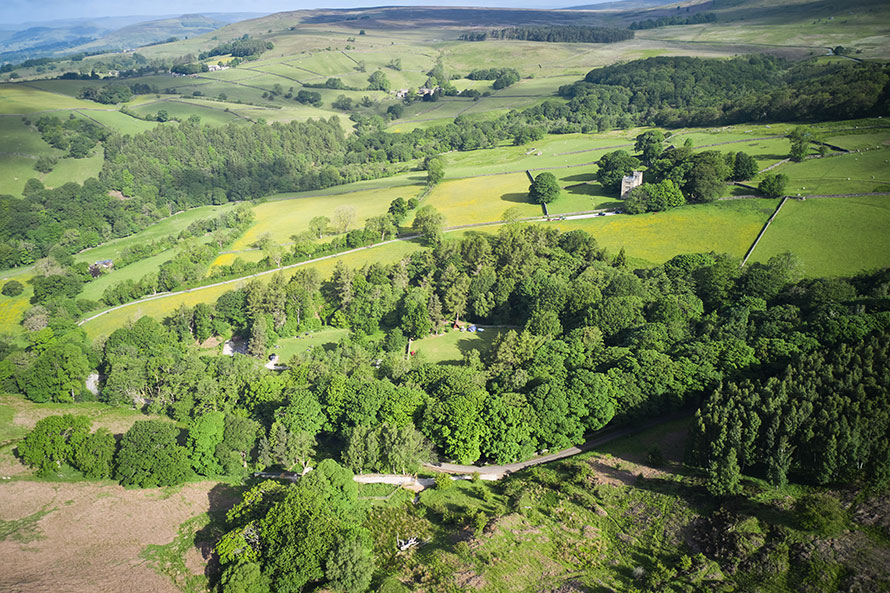# Target
By 2028 to have implemented the first five years of the One Peak District Nature Recovery Plan.
The Peak District National Park is a resilient landscape in which nature, beauty, and cultural heritage are significantly enhanced.

The Peak District National Park was the first in the UK to be designated in 1951 for its outstanding landscape, environment and wildlife. Its special qualities depend on the conservation and enhancement of nature, beauty and cultural heritage. This is evidenced in:
You can find the National Park Authority's definition of Cultural Heritage in the appendix.
The Landscapes Review highlighted the challenges facing our National Parks but recognised that there are solutions and most importantly opportunities particularly as bigger and better places for nature, connecting through wildlife corridors to each other, Areas of Outstanding Natural Beauty, and the wider countryside to increase resilience to climate change.
The UK is one of the most nature depleted countries in the world and the development of a nature recovery network across England is firmly on the national agenda. The Peak District National Park has not been immune to biodiversity loss and a partnership approach to implementing the Lawton principles of "Bigger, Better, More and Joined Up" for nature recovery is required. The landscape also needs to adapt to and mitigate the impacts of climate change. For example, increasing temperatures, changing rainfall patterns, increased frequency of extreme events such as flooding, displacement of species and changes to the start and length of seasons, new diseases and invasive species such as ash dieback disease and crayfish plague.
Caring for our landscape, providing for nature recovery, addressing climate change as well as producing food is the revised ask of our farmers, land managers and land owners. The phasing out of the Basic Payment Scheme (with payments based simply on the area of land farmed) by 2027 and its replacement by the new Environmental Land Management (ELM) schemes with the principle of "payment of public money for the delivery of public goods" means a period of huge change for our farming and land management community. A resilient and sustainable business model that delivers for nature and carbon as well as producing food is required. ELM schemes will need to provide sufficient incentive for farmers and land managers to participate and deliver nature recovery, address climate change, care for characteristic cultural heritage features such as traditional buildings, dry-stone walls and other heritage assets as well as producing food.
Whilst recent world events have increased the focus on food production, food security and business growth, the National Park remains well positioned to provide for nature recovery and the mitigation of and adaptation to climate change. The landscape which has evolved over generations of human interaction will continue to change, not least as nature recovery and climate change are addressed. These changes need to be managed in a way that protects and enhances the quality and condition of cultural heritage and landscape character. Current and future pressures facing cultural heritage including the built environment and the wider historic landscape will continue to be addressed, in particular through reuse of traditional buildings, good design for the built environment and protecting and enhancing historic landscapes and their heritage assets.
This aim and associated objectives are fundamental to ensure the essence of the National Park is conserved and enhanced but it depends on and links to the climate change measures. The three objectives seek to contribute towards the national agenda on nature recovery and ensure that the contrasting yet evolving landscapes of the National Park retain their unique characteristics for future generations.
By 2028 to have implemented the first five years of the One Peak District Nature Recovery Plan.
By 2028 we will have undertaken the following.
Agreeing and implementing the first five years of the One Peak District Nature Recovery Plan, complementing the emerging County Local Nature Recovery Strategies.
Increasing the area of land in Environmental Land Management schemes or equivalent, with a focus on, local nature recovery and landscape recovery.
Delivering the Wye Valley Collaboration Nature Recovery Project.
By 2028 there will be a 10% increase in audiences appreciating, understanding and enjoying cultural heritage.
By 2028 our cultural heritage and in particular built environments will be cared for and enhanced as an integral part of routine management through implementing the Landscape Strategy 2023 and by undertaking the following.
Piloting a one whole estate plan that addresses socio-economic issues as well as high environmental gains for a specific area.
Ensuring appropriate historic environment information is publicly accessible.
Minimising the impact on the landscape of replacement and new signage, cabling, communication masts and other similar infrastructure by sympathetically designing.
Reducing unnecessary signage, overhead wires and eyesores.
By 2028 landscape character, quality and condition will be enhanced or reinforced as it provides for nature recovery, climate change and access for all.
By 2028 the quality and character of the landscape will have been protected, enhanced or reinforced through implementing the Landscape Strategy 2023 and by delivering the following.
Establishing a baseline and reassessing the changes to the landscape using the Landscape Strategy's Landscape Description Unit photographs.
Understanding how people appreciate the evolving landscape and supporting them to positively embrace landscape change.
Piloting landscape change modelling using new technologies to simulate how the landscape will look in the future as it provides for climate change and nature recovery.